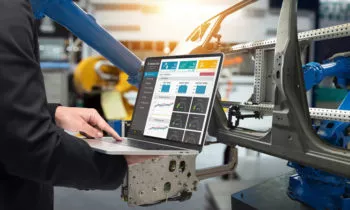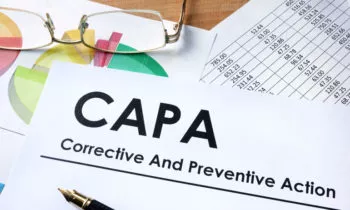When your product doesn’t meet your or your customer’s standards, you need to document why, investigate, and validate the reason for the deviation. Streamlining this process is an essential part of increasing company efficiency, reducing costs, and simplifying compliance.
With ENSUR Document Management, your company can take full control of your deviation and complaint process. The ability to collect, correlate, investigate, and make informed improvements can be electronically executed within ENSUR, granting you streamlined quality and control throughout your company.

As a flexible, integrated Quality Management System (QMS), ENSUR enables you to configure the software to align with your processes. With the help of configurable workflows and web forms, every step of your process is tied together, from the moment a deviation or complaint is detected all the way through the investigation, correction, and follow-up. Don’t just manage deviations and complaints, tackle them head-on and work to avoid their recurrence.
ENSUR helps you turn deviation and complaint control into a means for continuous quality improvement:
- Link incidents to work instructions, procedures, training events, and specifications stored within ENSUR
- Collaborate on the definition and resolution of deviations and complaints
- Allow users of ENSUR to enter incidents and generate Corrective Action Preventative Action requests by site, supplier, customer, product, and more using web forms
- Assign Action Items to specific employees, departments, or teams
- Upload and attach any file type to deviation/complaint incidents
- Configurable, automated workflow that can be changed when needed
- Automated email notifications to all parties involved in an incident
- Comprehensive detailed audit trails on user actions, names, dates, and times of when incidents have been created, reviewed, analyzed, implemented, modified, verified, deferred, and closed
- Generate reports and export data to track trends, measure improvements, and analyze your deviations/complaints
- Out-of-the-box or build your own custom template web-forms
- What is deviation & complaints management?
- Deviation and complaint management is the process of identifying, investigating, and resolving deviations and complaints. Deviations are any instances where a process or product does not meet the required specifications. Complaints are any expressions of dissatisfaction with a product or service.
The goal of deviation and complaint management is to improve the quality of products and services by preventing deviations from happening in the first place and by resolving complaints quickly and effectively.
- Deviation and complaint management is the process of identifying, investigating, and resolving deviations and complaints. Deviations are any instances where a process or product does not meet the required specifications. Complaints are any expressions of dissatisfaction with a product or service.
- What is the Deviations & Complaints process?
- The Deviations & Complaints process typically follows these steps:
- Identify the deviation or complaint. This can be done through customer feedback, internal audits, or other means.
- Investigate the deviation or complaint. This involves gathering information about the incident and determining the root cause.
- Take corrective action. This involves implementing changes to prevent the deviation or complaint from happening again.
- Close the case. Lastly, it’s necessary to document the findings of the investigation and the corrective action taken.
- The Deviations & Complaints process typically follows these steps:
- How does DocXellent’s ENSUR simplify the deviations & complaints process?
- ENSUR helps the deviations & complaints process by providing a centralized system for storing and managing deviation and complaint information. ENSUR also provides tools for investigating and resolving deviations and complaints and tracking the effectiveness of corrective action.
- What are Deviation Management Requirements?
- Deviation management requirements vary depending on the industry and the specific process or product being controlled. However, some common requirements include:
- Identifying and documenting all deviations.
- Investigating the root cause of each deviation.
- Taking corrective action to prevent the deviation from happening again.
- Tracking the effectiveness of corrective action.
- Deviation management requirements vary depending on the industry and the specific process or product being controlled. However, some common requirements include:
- What Is a Deviation Report?
- A deviation report is a document that summarizes the findings of an investigation into a deviation. The report should include the following information:
- Date and time of the deviation.
- Description of the deviation.
- Potential causes of the deviation.
- Corrective action taken.
- Recommendations for preventing future deviations.
- A deviation report is a document that summarizes the findings of an investigation into a deviation. The report should include the following information:




























